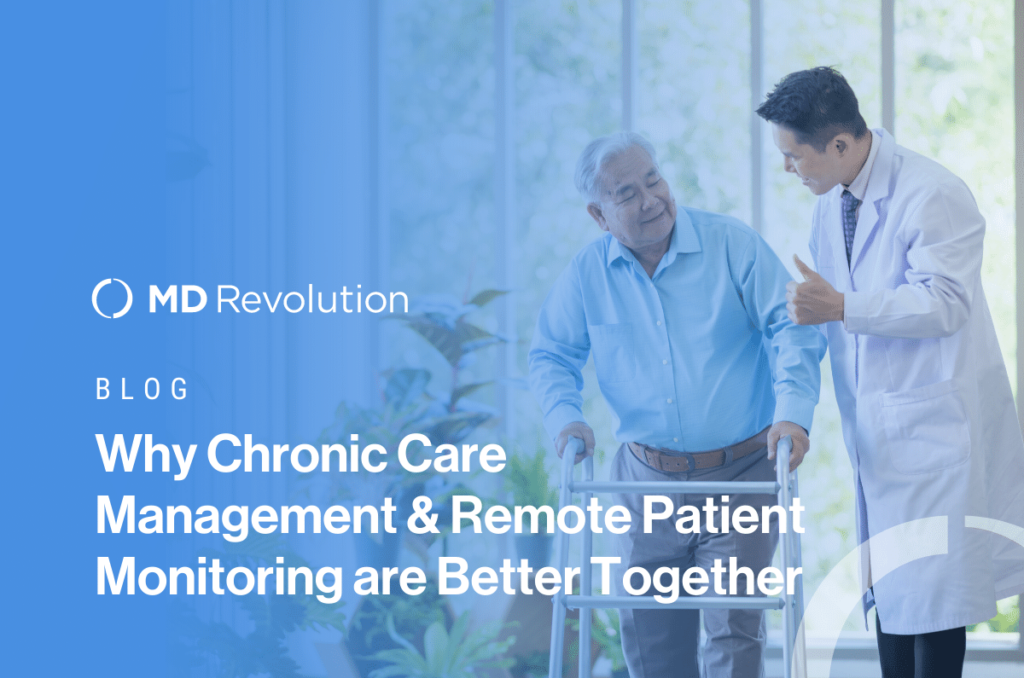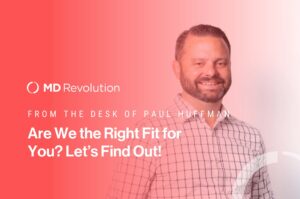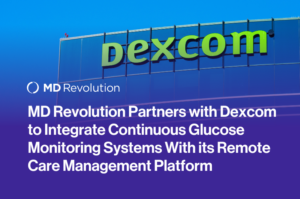RPM and CCM together as one comprehensive program
For practices looking to scale their care coordination strategy, there is a long list of reasons why Chronic Care Management (CCM) + Remote Patient Monitoring (RPM) is a winning formula. Yet until now, the right solution has been elusive. Currently integrated into hundreds of practices around the country, our RevUp platform has redefined the approach—and is leading to higher provider and patient satisfaction, better care for patients most in need, and more reimbursement.
But first, let’s define the equation. CCM is a model of care designed to support patients with diabetes, arthritis, heart disease, and other long-term conditions. Treatment is highly collaborative and includes routine monitoring of the patient’s health, medication levels, care coordination, and more.
RPM leverages technology, such as digital devices and sensors, to remotely collect and monitor a patient’s health status. Overseeing everything from vital signs to glucose levels, RPM allows patients to stay connected to their providers, and engaged in their care, from their homes. Often, RPM programs include trained medical teams that are available through a mobile app or a video chat in case the patient has questions.
Whole-person care for chronically ill patient populations
So why does the RevUp approach of CCM and RPM pair so well?
For starters, the combined approach—which we broadly refer to as remote care management—provides significant advantages to patients. Most qualify for both initiatives and, once they’re onboarded, become highly engaged in both the programs and their remote care plans. Most patients don’t know which program they’re enrolled in, nor would they likely know if they are enrolled in both. However, they do understand and care about the strong relationship between themselves, their doctor, and the care coordinators that they interact with. When technology can support that symbiotic relationship, the practice provides exceptional whole-person care.
I have been receiving requests from the physicians for day one about being able to monitor blood pressure remotely. For our existing CCM patients, when I start saying to them, “We have the added benefit for RPM now, it is a benefit covered by your insurance,” they’re thrilled. We say to them, “Let us worry about your blood pressure. Let us worry about the numbers. Let us worry if they’re out of range. You just have to check it. Let us take that burden away from you.”
The combined approach also impacts the practice’s bottom line, by maximizing reimbursement for remote care services, without placing an additional burden on physicians and staff. In fact, many of our practice partners find that they are already doing much of the work associated with both programs, but since they aren’t offering a formal program, they are missing out on the full reimbursement potential.

From a practice perspective, CCM and RPM go hand in hand. The program enables practices to scale their programs quickly and easily—engaging and retaining most of their eligible patients. It’s also very easy to introduce, enroll, and onboard patients in both programs simultaneously.
We were providing chronic care management to our heart failure patients, and realized we could broaden our services to people suffering from hypertension with remote patient monitoring. Since heart failure patients are typically going to have hypertension too, enrolling them into a RevUp solution allows the practice to treat the patient holistically.
Christine Onstott – Cardiac Solutions
High-Touch Health Coaching + Digital Engagement = Better Patient Outcomes
Medicare’s RPM and CCM programs can go hand in hand, complementing whole-person care with technology and clinical care, while acting as a scalable revenue generator.
Key takeaways of a combined approach to Remote Patient Monitoring and Chronic Care Management include:
- Improved patient engagement
- Better health outcomes
- Early detection of health issues
- More personalized care
- Improved efficiency for providers
Having RPM doesn’t add to the time it takes for an office visit, it makes it a more valuable appointment.
Nurse Practitioner – Cardiology



